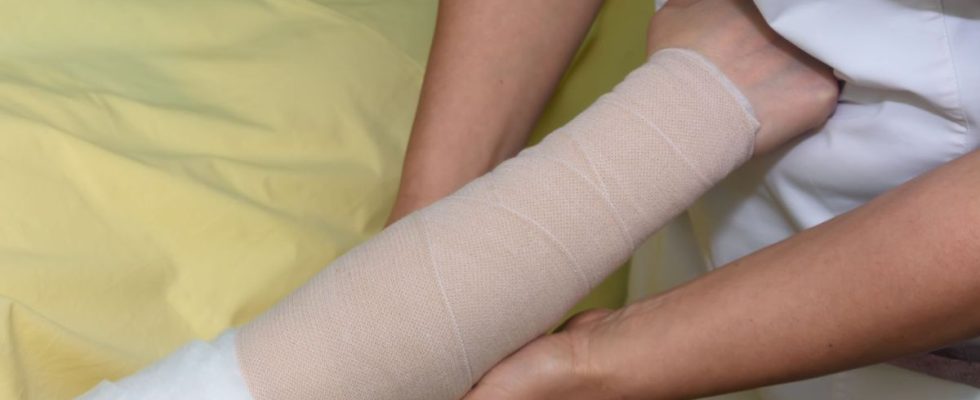Published on
Updated
Reading 3 min.
in collaboration with
Christian Herlin (Surgeon)
Suffering from lymphedema, a 19-year-old patient was able to benefit from a microsurgery technique to provide relief. This approach was carried out for the first time within the Montpellier University Hospital. Explanations from Professor Christian Herlin, surgeon and head of the plastic surgery and burns department, at Montpellier University Hospital, who carried out the procedure.
A 19-year-old patient suffering from lymphedema was operated on to relieve his symptoms. His lymphedema developed after he went into remission from Ewing’s sarcoma, a bone tumor, which affected his shoulder blade, in 2020.
What is lymphedema?
Lymphedema is caused by a deficiency of the lymph nodes and/or vessels. Lymph, a transparent liquid that circulates in this system, then stagnates and causes a permanent increase in the volume of the affected body segment: the arm or leg, generally.
We speak of primary lymphedema when it appears without a triggering factor. This will be secondary lymphedema, following lymph node dissection or radiotherapy sessions, in the context of cancer, the most common case being breast cancer.
What microsurgery technique is used?
The technique used to treat this young 19-year-old patient consists of connecting different vessels to re-establish a flow of lymph towards the venous sector, thus unclogging the lymphedema. “The technique has been around for around ten years.” explains Professor Chrisitian Herlin, surgeon and head of the plastic surgery and burns department at Montpellier University Hospital. “This is not a first in France, the feat that we are announcing today is rather linked to technical performance: we have managed to anastomose a lymphatic vessel to a vein with a caliber of 0.07 mm, where teams who have mastered this procedure, particularly in Asia, carry out surgeries with a diameter of 0.3 mm.
Few hospitals in France have this technique
This intervention, which lasted an hour, aimed to restore circulation of the lymph to the venous system and therefore to reduce all of the patient’s symptoms. To achieve this, the surgeon was helped by the medical team of Professor Isabelle Quéré, head of the vascular medicine department and the French reference center for lymphedema, but also by two medical experts in lymphology: Dr Sandrine Mestre Godin from the CHU from Montpellier and Professor Jean-Paul Belgrado from the expert center in Brussels.
They mapped the lymphatic system through the skin using a dye and an infrared camera dedicated to this use, what we call fluoroscopy. “We are seriously lacking the equipment to carry out this type of intervention.” deplores Professor Herlin. “We were able to acquire the microscope, worth 400,000 euros, but we have not yet been able to buy the infrared camera, which costs around 90,000 euros. By carrying out this intervention, the Montpellier University Hospital wants to highlight its skills in this cutting-edge field, which can help relieve many patients.
“The long-term objective would be to do preventive surgery”
Indeed, lymphedema is a pathology that affects several thousand patients in France. “We are quite good in the medical treatment of pathology in France, with compression and performing massages and drainage to evacuate the lymph, in order to relieve the patient” estimates the surgeon. “On the other hand, surgery is not yet well exploited“.
For Professor Herlin, it would be possible, by investing in the technique, to treat patients preventively. “The vast majority of cases of lymphedema occur after lymph node surgery, in the case of melanoma, breast cancer or pelvic pathologies. They are induced by surgery, but by performing this technical procedure preventively, patients would be spared. For others, the technique could constitute a first treatment for their symptoms..
Once operated, will patients be permanently cured? “With the hindsight we have, we can say that we are improving the comfort of patients, who describe a less heavy, more flexible and less swollen limb. explains the specialist. A significant improvement for people suffering from this serious pathology.
